How do I know if there’s mold in my wall? The answer to this question often requires the expertise of an indoor air quality assessment professional. In Florida and South Georgia, mold in walls is common due to our warm, humid climate. Detecting the presence of mold in your walls can prove challenging but we outline some of the most effective methods in the reading ahead!
How Do I Know if There’s Mold in My Wall?
Some minimally invasive procedures can be carried out first, but ultimately, the best way to know if you have mold in your wall is to remove a portion of it to see what’s inside the wall cavity. However, here are some common signs of mold in your walls:
- Moisture revealed through thermal imaging
- Visible discoloration
- Musty odors
- Water damage or stains
- Health symptoms
Thermal Imaging
Thermal imaging is the least-invasive way to attempt to answer the question, “How do I know if there’s mold in my wall?” However, thermal imaging cannot detect the presence of mold but only the presence of moisture. If you have a moisture “hot spot” then deduction would conclude that there’s a high likelihood you have mold in your wall–especially if the wall’s been wet for a prolonged period of time. Water is one of the required “food sources” for mold to grow and thrive.
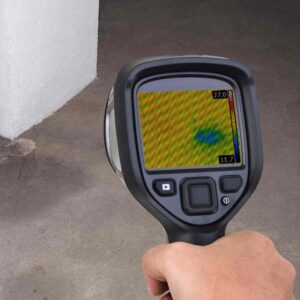
However, keep in mind that the absence of a high-moisture signal on a FLIR camera also doesn’t necessarily indicate that no mold is present. Conventional moisture meters that poke into drywall behind baseboard are another way to detect the presence of moisture. Conventional moisture meter usage is more common because these devices are more affordable than FLIR cameras.
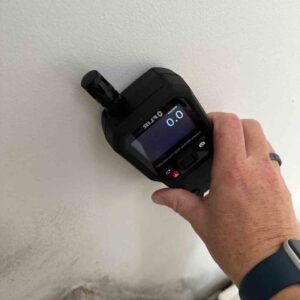
Visible Discoloration
Another common sign of mold in your walls is visible discoloration. These discolorations may include:
- black, green, or white spots
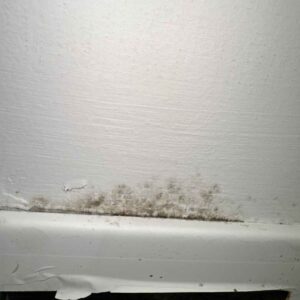
Color isn’t necessarily a unique characteristic of a mold’s toxicity. It’s popular among the untrained to associate the color black with more “toxic” molds but that isn’t necessarily true.
Musty Odors
If your home has a “musty” or stale odor but you can’t visibly see the presence of mold, it’s possible that the mold is present inside of your walls. This can be true for both interior and exterior walls. The most common places are kitchens, bathrooms, or laundry rooms. Ceilings are also common due to roof leaks.
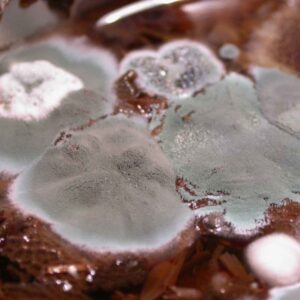
Remember that although mold is likely to be found in the common “wet” locations in your home, the odor can be pervasive throughout your entire home. A trained mold assessment professional can quickly identify the presence of mold odor upon entering your home!
Water Damage or Stains
A previous or ongoing water damage is often a reliable indicator that you have a mold problem. These leaks can occur through roof leaks, pipe leaks, slab leaks, sink or dishwasher overflows, etc. If you see the visible presence of water damage or water stains, you can rest assured that there is likely mold in your wall.
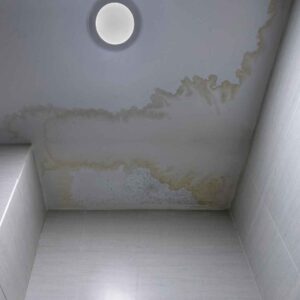
Health Symptoms
If you have inexplicable or recurring respiratory or health symptoms, it’s often a sign that you have a mold problem in your home. If after checking the most conspicuous areas you don’t see visible signs of mold, it’s possible it could be lurking inside of your walls.

Even when mold is hidden, odor and water damage are helpful signs that you might have a problem.
Calling an IAQ Professional Is the Best Way to Know if You Have Mold in Your Wall
Trying to find mold on your own is often tricky unless it’s completely obvious. If all of the less invasive means fail, the drywall can always be removed! Thankfully, drywall is inexpensive and easy to replace.
Reach out to a professional mold assessor if you want to know if there’s mold in your wall!
